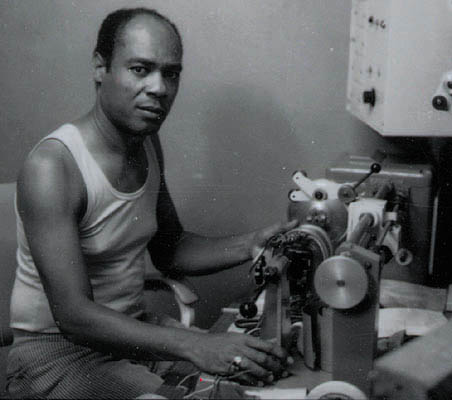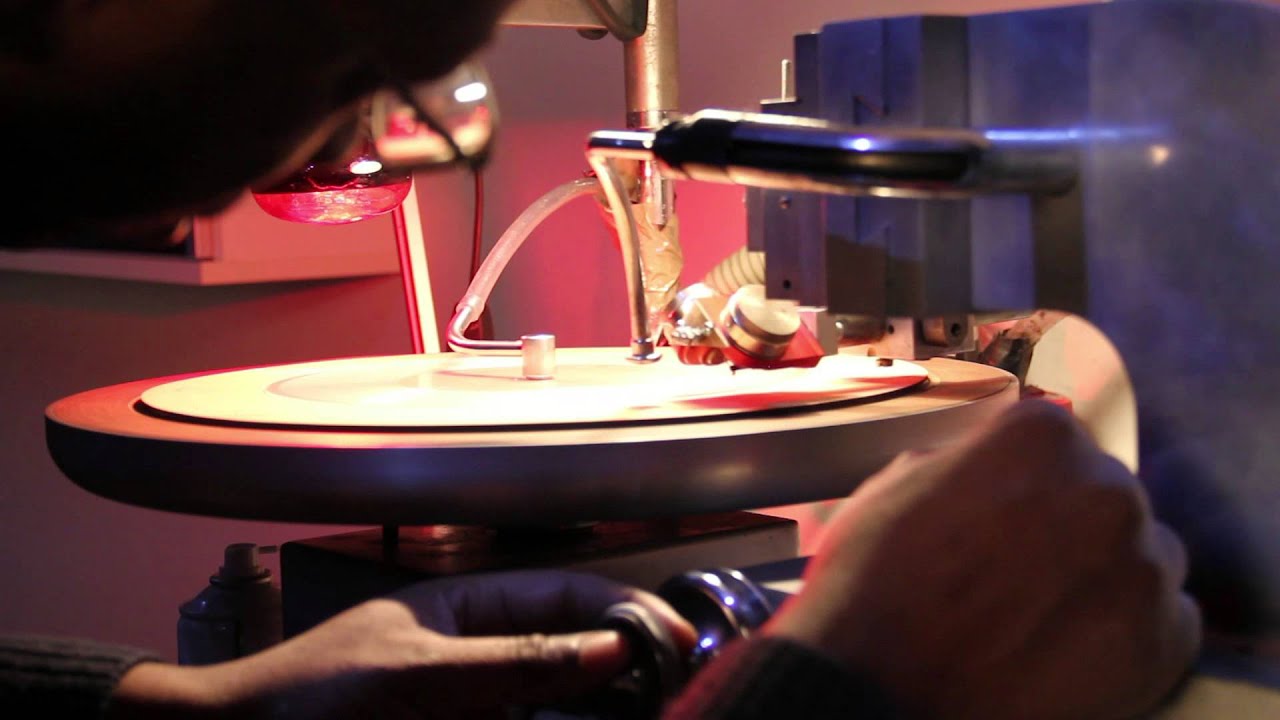Drum and Bass Culture, Jungle
Why Drum And Bass Dubplates Are Making A Comeback.
To say that drum and bass dubplates are making a comeback is to insinuate that they ever went away. In fact with the significant increase in vinyl sales again over the past few years, actual dubplates are being pressed for the masses.
Some of the scenes big hitters have been releasing dubplates by the boatload recently; S.P.Y’s Dubplate Style releases, Dom & Roland with Dubs From The Dungeon as well as a whole host of other labels and artists. It seems as though drum and bass dubplates are back in style.
But let’s take this back a little bit. The term dubplate has meant a few different things over the years. It’s a good idea to take a look at what they are, how dubplates affected drum and bass and how they continue to be a driving force in the development of the music and scene we all love.
The Birth Of The Dubplate
 As we all know, drum and bass has its origins in reggae, dancehall and Jamaican sound system culture. In sound clashes, dj’s would often create one of tunes for the event using acetate covered metal records. They would only last for about 10 plays of the record, so it was a super exclusive, yet highly cheap and convenient way for dj’s to generate exclusive tracks.
As we all know, drum and bass has its origins in reggae, dancehall and Jamaican sound system culture. In sound clashes, dj’s would often create one of tunes for the event using acetate covered metal records. They would only last for about 10 plays of the record, so it was a super exclusive, yet highly cheap and convenient way for dj’s to generate exclusive tracks.
Moving forwards a few years and in the early days of drum and bass music production, one of the few ways to check what a track would sound like was to get a dubplate cut. You’d rip the track and get it pressed to vinyl so that you could play it over a large sound system and then hear what edits needed to be made in the final version and how it needed to be mastered.
This was expensive though. It would cost about £50 per press and back in the early 90’s that was a fair bit of money to outlay for independent record labels. Drum and bass was in its infancy then and only the big corporation labels were able to press huge volumes of dubplates.
As a result, these usually unheard pressings became like gold dust to other dj’s. Early versions of tracks that were later remixed became a sign that if you could get your hands on a popular track as a dubplate, you were well in the know.
Eventually, having one of these dubplates and playing it out in a club became a badge of honour. Everyone wanted to know what the track was, as well as if they could get their hands on it. Dubplates became a way to hype up a track, dj or sound in the club scene, long before it was released to the general public.
The Decline Of Drum and Bass Dubplates
The amazing thing about drum and bass is that it is constantly reinventing itself. It’s kind of the nature of the music. It doesn’t have to be forced to evolve; it simply does. With the introduction of mp3’s and digital decks, vinyl started to fade. This was simply an evolution to the next phase of music production. As a result, less people started pressing dubplates until they almost faded out.
Drum and bass has always had a strong vinyl culture. It’s sort of a way of remembering the roots of the scene. You can often see dj’s using Traktor vinyl setups. They don’t need to. Everything the play could easily be run through the CDJ’s and computer, but for some, it’s a way to hold on to the past whilst embracing the future.

With the new emergence of better DAW’s, new sound engineering and processing techniques, producers and dj’s dove headlong into the new technology, leaving drum and bass dubplates to take a back seat.
Due to the nature of music production development, you didn’t need to press a dubplate in order to hear what it was like. You were simply able to take the file on a USB and stick it into a larger sound system. From there you would be able to move back into the DAW and make the edits you wanted. Digital music made everything quicker and easier to develop.
Drum And Bass On The Radio
 Something happened that made a fundamental shift in the decision to bring back drum and bass dubplates. The radio.
Something happened that made a fundamental shift in the decision to bring back drum and bass dubplates. The radio.
All of a sudden, drum and bass was being played on the radio. DNB was heading mainstream and producers and dj’s were rushing to get their tunes played on the airwaves for the nation’s ravers. It was a shortcut to fame and fortune. During the mid 2000’s, drum and bass had unprecedented exposure on the radio. Artists and labels were keen to get their music to the radio dj’s as quickly as they could.
This, in turn, had a negative effect inside the drum and bass scene. When artists were cutting drum and bass dubplates before, they would physically meet in the cutting houses. They would build connections, share music and ideas with each other. This led to collaborations and an expedited evolution of the sound within the scene.
Now, artists were trying to get their records played on the radio, so would make them for that media. They wouldn’t share with anyone else in their eagerness to get it out as quickly as possible. Unfortunately, this didn’t sit well with the artists within the scene. The Chase & Status super duo complained that they would be on the way to a club to play a bunch of exclusives, only to hear an artist they’ve known for 15 years releasing a track on the radio and them being the last to get it.
It didn’t sit well and went against the drum and bass dubplate culture that was integral to the evolution of the scene. There was a knock on effect with this too. The hype was no longer there when tracks were released.
The Rise Of Drum And Bass Dubplates
If a track comes on the radio, everyone can hear it and so the buzz might be big, but doesn’t last long. Dubplate culture was always about exclusivity. You wanted people to hear it, give you feedback and then use it in the environment it was supposed to be used in; the clubs and raves.
Ravers would clamour to hear that banger that was being dropped at this particular rave and would wait in anticipation to hear it. If you were the dj that had access to it, you were the one people wanted to hear more of, as you were close to the source.
Artists and producers were still sharing music. It wasn’t like they had completely stopped. It had just changed in the locations of where it was being shared and the format it was in. With the massive resurgence of underground drum and bass, people want fresh.
In the past few years, several new labels have sprung up, run by the artists themselves and are not following the typical big-label model. They want to build hype and they want the people they consider the top dj’s to have access to it long before they are released.
Many labels are now offering out exclusives long before the release date to other labels and dj’s. Drum and bass has moved away from the radio as a regular genre played during the day time and has moved back into the clubs as well as other venues, up and down the country.
As we already said, drum and bass is a constantly evolving animal. It challenges itself to reinvent its sound all the time. With the new generation coming through, artists that have been in the scene for 20 plus years are able to play a blend of old and new. To the new generation, classic tracks are completely new to them, bringing back the sound of a generation.
This in turn challenges artists to create new tracks from those old classics. Chase & Status’s Original Nuttah 25 is a testament to this. Which in itself is a dubplate as it is not available to purchase from anywhere. It’s online, but you can’t get it for yourself.
The Evolution Of Drum And Bass Dubplates
 Drum and Bass dubplates have come full circle and continue to evolve. S.P.Y.’s Dubplate Style Project has taken off with wild acclaim. Chase & Status’s, RETURN II JUNGLE brought them right back to the top of the DNB charts. Almost everyone is hopping on the drum and bass dubplates.
Drum and Bass dubplates have come full circle and continue to evolve. S.P.Y.’s Dubplate Style Project has taken off with wild acclaim. Chase & Status’s, RETURN II JUNGLE brought them right back to the top of the DNB charts. Almost everyone is hopping on the drum and bass dubplates.
Yes, even vinyl is as popular as ever in drum and bass. Most artists and labels are purposely releasing their albums on vinyl and they are being snapped up faster than they can be pressed. This is driving people back into the cutting houses and once again fueling the competitive and collaborative evolution of the scene.
Drum and bass has never been so healthy. So much good music is being created by an ever expanding pool in talented artists and producers. Other scenes would run the risk of being watered down, yet drum and bass prides itself on its perfectionism and legendary high production value.
Drum and bass dubplates have and alway will be a way of connecting to the past, yet strangely also represent the future of the scene.

